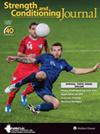Types and Contributors to Occupational Fatigue
IF 3
4区 医学
Q2 SPORT SCIENCES
引用次数: 0
Abstract
ABSTRACT Although fatigue is commonly experienced in many highly demanding occupations (e.g., military, first responders, etc.), it is poorly defined. Fatigue can strongly affect occupational performance by negatively influencing the ability to interact with the world by altering the capacity to think, move, feel, see, and speak. The first step in fatigue risk management strategies is to establish a context. The context of this narrative review is to specifically describe and discuss the 6 overarching types of occupational fatigue: cognitive, physical, burnout, emotional, visual, and vocal fatigue, and how each affects varying occupations. Furthermore, fatigue type can be influenced by several intrinsic factors, such as sleep deprivation, circadian alignment, ultradian process, sleep homeostasis, and health factors. Similarly, extrinsic factors influence fatigue, such as workload, shift work, and environmental issues. Understanding the types and contributors to occupational fatigue may help clarify the context of occupational fatigue and serve to guide future occupational fatigue management.职业疲劳的类型和成因
虽然疲劳在许多高要求的职业(例如,军事,急救人员等)中很常见,但它的定义很差。疲劳通过改变思考、移动、感觉、观察和说话的能力,对与世界互动的能力产生负面影响,从而对职业表现产生强烈影响。疲劳风险管理策略的第一步是建立环境。这篇叙述性回顾的背景是专门描述和讨论6种主要类型的职业疲劳:认知疲劳、身体疲劳、倦怠、情感疲劳、视觉疲劳和声音疲劳,以及每种疲劳对不同职业的影响。此外,疲劳类型可能受到几个内在因素的影响,如睡眠剥夺、昼夜节律一致性、超昼夜过程、睡眠稳态和健康因素。同样,外部因素也会影响疲劳,如工作量、轮班工作和环境问题。了解职业疲劳的类型和成因可能有助于澄清职业疲劳的背景,并有助于指导未来的职业疲劳管理。
本文章由计算机程序翻译,如有差异,请以英文原文为准。
求助全文
约1分钟内获得全文
求助全文
来源期刊

Strength and Conditioning Journal
社会科学-运动科学
CiteScore
4.70
自引率
8.00%
发文量
49
审稿时长
6-12 weeks
期刊介绍:
Strength and Conditioning Journal is the professional journal for strength coaches, personal trainers, physical therapists, athletic trainers, and other health professionals working in the strength and conditioning field. The journal’s mission is to publish articles that report both the practical applications of research findings and the knowledge gained by experienced professionals.
 求助内容:
求助内容: 应助结果提醒方式:
应助结果提醒方式:


